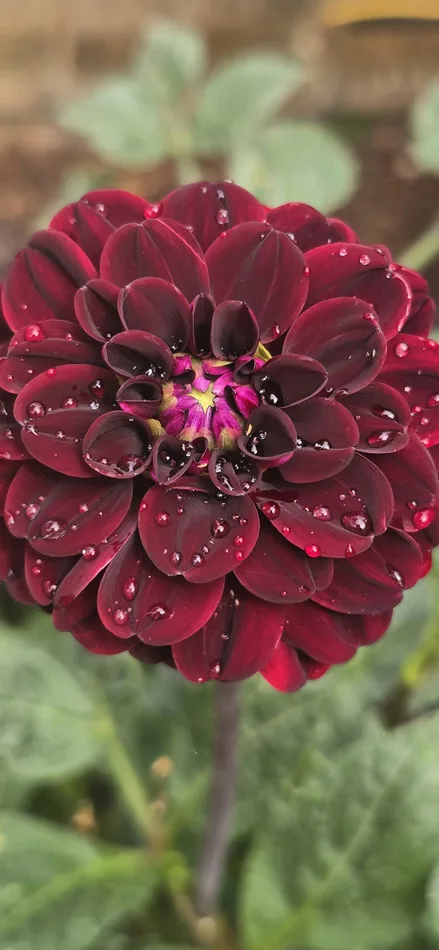From clearing beds to sowing seeds and preparing dahlias for the cold months, Pete Harcom has plenty of jobs to get your patch winter-ready

Image (and dahlia) by Courtenay Hitchcock
It’s time to clear up for the winter! Gardeners can make use of those odd dry days to allow the clear-up to be done before the harshest winter weather sets in.
Clear faded and dying annual climbers such as sweet peas from their supports.
Clear up fallen leaves and put them in plastic bags or in a heap to rot down as leaf mould (this may take a year or so) which can then be used as a mulch.
Sowing seeds in a cold greenhouse is a nice job to do at this time of year. Some good picks are sweet peas, ajuga reptans (really good for ground cover), cornflowers, astrantias, corydalis solida and allium sphaerocephalon to name just a few!
When clearing up flowerbeds, try to keep off wet soil to avoid compacting it. If you must get in there, use wooden boards to spread your weight.
It is a good idea to leave plants with attractive seed heads, such as rudbeckia, sea holly (eryngium), teasels, love-in-a-mist and ornamental grasses, as these can provide valuable food for birds in the winter months. They can also be used in flower arrangements. Cut down the old seedheads in spring, when the new growth starts to appear.
If you haven’t got to it yet, there is still time to plant spring bulbs and bare-rooted trees and shrubs before the colder weather.
Dahlia care
Dahlias are not frost hardy and will not survive severe cold, so enjoy every last bit of those dramatic flowers, which are still coming thick and fast in this mild weather.
To overwinter your dahlias, you can safely wait until the first autumn frost blackens the foliage before taking action.
After the frost – and once the foliage has died back – cut the stems down to about 10-15cm above the ground … and now you must decide whether to lift or mulch …
Lift and store (recommended for colder areas or heavy soils): This is the most reliable method for protecting your dahlia tubers. Gently lift the tubers from the soil using a fork, being careful not to damage them. Trim off any fine or damaged roots and leave them to dry for a few days. Store them in shallow boxes, packed around with peat-free compost or dry sand, ensuring the crown is exposed. Keep them in a cool, dry, frost-free place, such as a garage or shed, until spring. Inspect the stored tubers regularly for any signs of rot and discard any that are unhealthy or damaged to prevent rot from spreading.
Mulch (for milder, well-drained areas): This simpler method may work well for The BV readers, as Dorset is generally milder than much of the country. Cover the tubers – still in the soil – with a thick layer of mulch, such as bark or composted leaves or straw, to insulate them from the cold.


